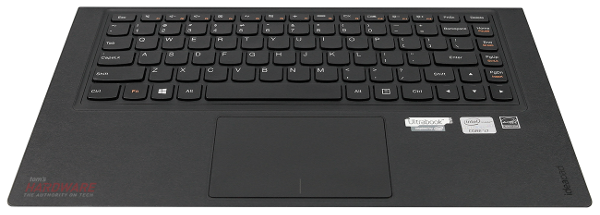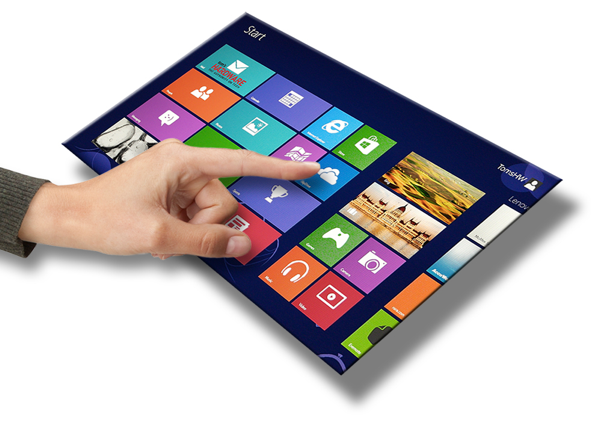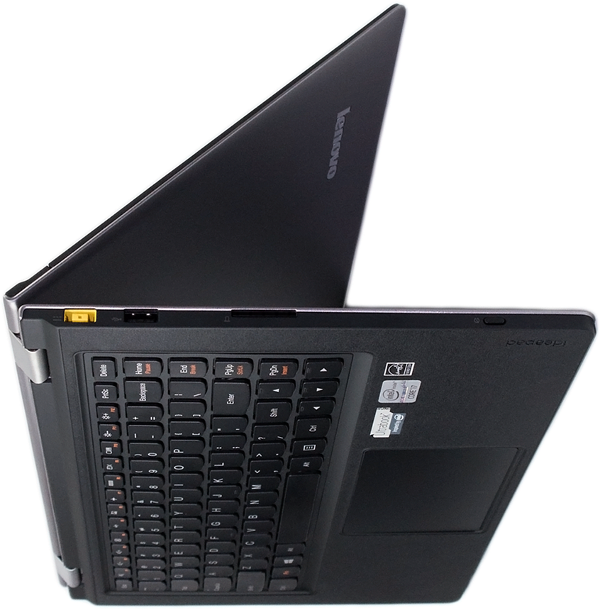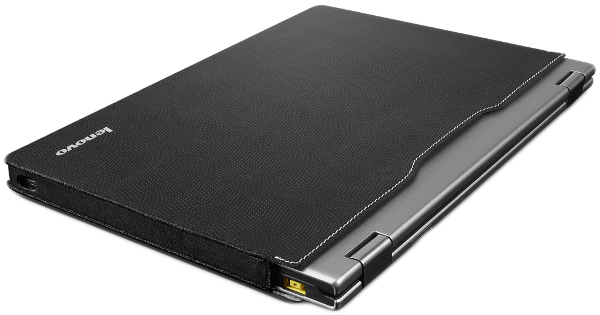Lenovo IdeaPad Yoga 13 Review: One Flexible Ultrabook
Whether in notebook, stand, tent, or tablet mode, the Lenovo IdeaPad Yoga 13 is definitely a head-turner. But does this Ultrabook's innovative multi-mode design effectively juggle its multiple personalities in an equally-harmonious, Zen-like manner?
Keyboard, Touchpad, And Touchscreen
Keyboard
The Yoga 13 is equipped with Lenovo’s AccuType keyboard. While this may disappoint those hoping for the ThinkPad Precision keyboard, don’t be too critical of the move just yet. The AccuType is actually only a lighter-weight version of the ThinkPad’s keyboard, and arguably one of the best standard laptop keyboards currently available. The tactile feedback and travel depth of the individual keys is quite nice. The most notable difference between the Yoga 13's AccuType and the one found on the professional-grade ThinkPad models is the AccuType's smaller-sized backspace and right-shift keys. Additionally, the Yoga 13’s AccuType keyboard does not offer a back-lit option.
One keyboard issue that we just can’t look past is the excessive amount of flex in the keyboard substrate. This occurs even while typing in a normal manner. We measured downward flexing in excess of 3 mm towards the mid-center of the keyboard. During our teardown, we found that this issue can be mostly resolved with the application of additional double-sided 3M tape on the rear base of the keyboard assembly. Some Yoga 13 owners are also reporting this flex, while others deny it. In the end, this points to a possible quality control issue at the factory, which doesn't necessarily affect every Yoga 13 that ships.
Touchpad
The Yoga 13’s luxuriously sized, matte glass touchpad offers a ton of real-estate to work with. While the Synaptics touchpad lacks traditional mouse buttons, it fully supports Windows 8 gestures. The tactile input is quite good the majority of the time while using the stock driver provided by Lenovo (v16.2.21.3 – 11/12). However, occasional touchpad sensitivity issues can hinder scrolling. Lenovo is reportedly working with Synaptics to update the driver and address this minor issue.
Touchscreen
The Yoga 13’s multi-touch screen looks great and functions equally well. The second-generation Gorilla Glass outer layer protects the sub-display while allowing for reactive tactile sensitivity and smooth swiping. Although our testing did not exceed five-finger gestures, all attempts to confuse the screen only left us wondering why anyone would use more than two or three figures to do anything on a touchscreen. In this regard, the Yoga 13 offers stellar performance. The only reservation some may have is the higher level of reflective glare the glass-based screen produces outside, or in an office with overhead lighting. However, this is the case with virtually all similar display types, and not a fault we find with the Yoga 13 or Lenovo in particular.
Get Tom's Hardware's best news and in-depth reviews, straight to your inbox.
Although everyone is different, for most, the Yoga 13 should prove very comfortable to hold in one hand. In fact, the weight of this system is excellent considering its size and the high-end materials that Lenovo uses in manufacturing it.
Other Thoughts
The biggest comfort issue we have is the physical orientation of the keyboard and touchpad when the Yoga 13 is in Tablet or Stand Mode. As mentioned, even though the keyboard and touchpad are automatically disabled when the system is in anything other than Laptop Mode, gripping onto the unit and feeling keys mash down behind it takes some getting used to (Ed.: Having also used a Yoga 13 for a couple of months, this isn't something I was ever able to accept). Likewise, just knowing that the keyboard and touchpad are face down in Stand Mode is a little disconcerting.
Considering the premium nature of the Yoga 13, one could reasonably expect that some form of keyboard and touchpad protection should be offered as standard equipment.
The optional “Slot-In-Case” (Model #: 0C48344) could effectively function as a keyboard/palmrest cover in addition to protecting the system base. Perhaps Lenovo could consider including it in the Yoga 13's purchase price?
Current page: Keyboard, Touchpad, And Touchscreen
Prev Page Exterior: First Impressions Are Important Next Page Interior: Is Beauty Only Case Deep?-
danaistina I bought a yoga 13 a few months ago. Author of the article obviously has some special version of this ultrabook, which no one else, including me and the people of the Lenovo forums has heard that there is no following problems: touchpad does not support all Windovs 8 gestures, wirerless card has very weak signal, runs very hot and noise from the vents is loud. And finally: windows 8 has not yet up to use touch screen like a android or ios devices.Reply -
danaistina I bought a yoga 13 a few months ago. Author of the article obviously has some special version of this ultrabook, which no one else, including me and the people of the Lenovo forums has heard that there is no following problems: touchpad does not support all Windovs 8 gestures, wirerless card has very weak signal, runs very hot and noise from the vents is loud. And finally: windows 8 has not yet up to use touch screen like a android or ios devices.Reply -
sgadadish Tent (Joke) Mode : simply serving as a digital picture frame placed tastefully on a shelf or desk . , Sure...Reply -
hothfox I contemplated this and the Thinkpad Twist, and wound up getting the Twist, largely because when you flip it around to it's tablet mode, the keyboard and touchpad are covered by the screen, instead of exposed.Reply -
Amdlova 9hr battery... idle and screen of... 5 hr real condition... when we get something can do 12 hrs.Reply -
whyso How is the yoga gettng better bandwidth numbers that it is in theory capable of? 21GB/sec for cached read when theoretically it maxes out at 12.8 GB/secReply -
Kattie Anderson Get a premium support for yoga at http://ytechsupport.com/lenovo-laptop-support-.htmlReply



